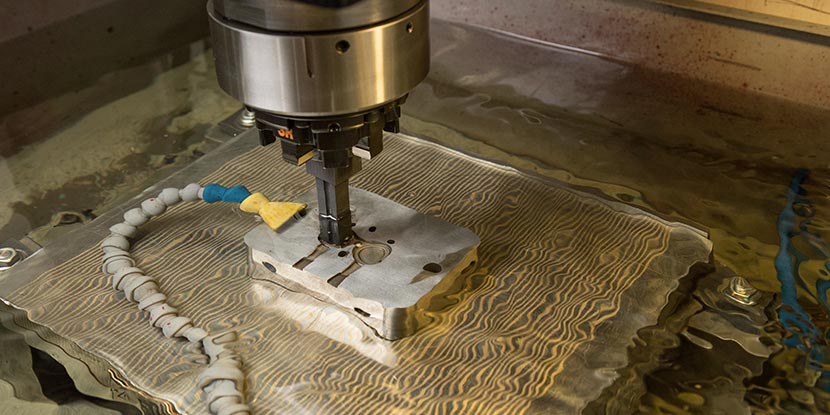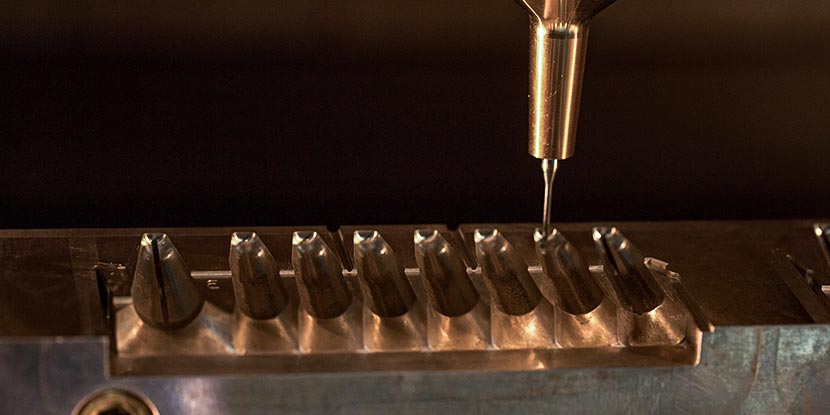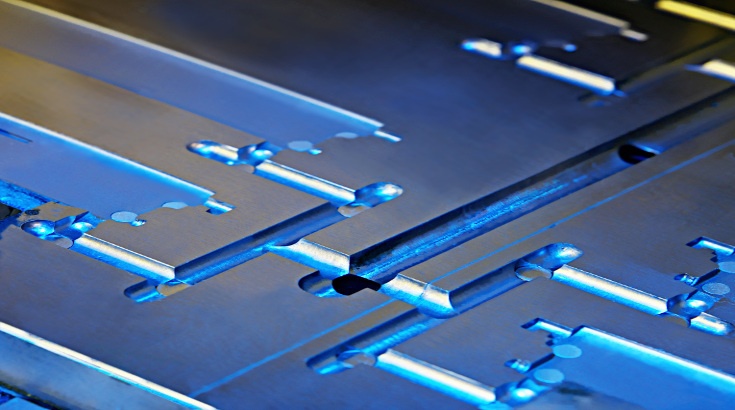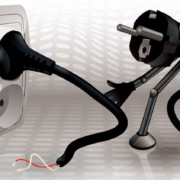Tool steel selection for your medical injection mold
Beginning the tool steel selection process
Selecting a tool steel grade for your mold is the first step to manufacturing your medical device. Although specialized tool steels aren’t required for medical injection molding, certain grades of steel are more appropriate for medical injection molding than others.
Working with a contract manufacturer to pinpoint steels will ensure that your tool will match your device’s design and help you avoid operating issues and tool damage. Steel selection will depend on your project’s specifications, including production volume, device design, plastic selection and surface finish.
There is no official protocol for selecting a mold steel. However, we recommend the following process:
- Learn about popular plastic mold steel grades
- Establish which factors will affect tool steel selection
- Consider production volume

1. Learn about popular plastic mold steel grades
Each steel type has limitations. Therefore, injection mold steel selection is directly influenced by the design of your medical injection mold and the plastic material of your device. For example, if your design calls for a lens, you will need a steel with good polishability. Alternatively, if your plastic material is abrasive, you will need a tougher steel to avoid damage.
There are dozens of tool steels on the market. However, the steels listed are popular for medical injection molding. Continue reading to learn about each.
H-13 steel
H-13 is a versatile steel with excellent tensile properties, surface texture, wear resistance, toughness and heat conduction. H-13 can be hardened to Rockwell 52, which makes it ideal for tool cavities and running abrasive materials. H-13 can also be nitrided for sliding components and chromium plated for reconditioning.
Because H-13 has good heat conduction, it can be hardened to higher Rockwells. This results in fewer surface blemishes in the tool cavity, meaning those defects won’t appear on the parts. As such, H-13 is suitable for devices that have lenses, screens and parts with mirror finishes or a component with a human interface.
P-20 steel
P-20 is an oil-hardened steel that works well for low to medium production runs. It can be hardened to Rockwell 32. Although P-20 is generally regarded as a holding steel, it can be used for a tool’s core, cavity, sprues and sliding inserts.
P-20 can be machined fairly easily and doesn’t require heat treating, which gives it a faster lead time on tooling. It can also be repaired by welding and nitrided for additional durability.
S-7 steel
S-7 is ideal for tools with high production volumes and parts with tight tolerances. It can be hardened to Rockwell 56 for sliders or lifters and Rockwell 52 for cavities. It has an optimal impact resistance and is not as brittle as H-13, so it can be used for moving components (e.g., ejector plates, moveable cores and sprue bushings) without being nitrided.
S-7 can complement P-20 and H-13. However, it is commonly used in a tool’s core with H-13 in the cavity. In fact, S-7 cores work well for complex geometries because the steel can be machined with relative ease.
420 stainless steel
420 stainless steel is the first choice for tools that need to run corrosive materials like Polyvinyl Chloride (PVC). It can handle high production volumes and be hardened to Rockwell 52. However, stainless steel tends to wear quickly and is difficult to machine, which means it can’t accommodate complex geometries like S-7.
Porcerax II steel
Porcerax II is a sintered, porous steel used in areas of a tool that require a venting solution. It has 25% air by volume, which helps to reduce injection pressure and reject rates.
The steel is generally incorporated into areas of the mold that the plastic material fills last because gas emitted by thermoplastics (e.g., Nylon and ABS) can build up in these locations resulting in medical molding challenges, such as shorting or burn marks.

2. Establish which factors will affect tool steel selection
Several factors will influence your tool steel selection, including: Medical device design, plastic materials, hardness, surface finish, strength and toughness.
No one steel grade will perfectly balance each desired property — you will have to compromise. For example, if you need a tougher steel like P-20, you will have to work around its brittleness.
Medical device design
The complexity of your device’s design will influence which steels will be incorporated into your tool. Complex designs require precise machining that certain grades cannot handle.
It is not unusual for tools with complicated geometries to have various steels incorporated into the design because there are dozens of options available for the core, cavity, inserts, polished surfaces and moving components.
For example, H-13 and S-7 pair well together for the cavity and core, respectively, in hardened steel molds. Abrasions and heat generation are reduced because the two steels don’t cause significant friction when rubbed together.
Plastic materials
Plastic material selection directly affects process parameters (e.g., temperature and pressure) and steel selection. For example, some plastics need to be run at higher temperatures (e.g., polysulfone) and will require hardened steels with high melting points.
Each plastic material has specific tolerances and characteristics that the tool steel needs to accommodate as well. Plastic materials that are abrasive or produce corrosive gases need steel tools that are tougher or more porous, respectively.
PVC is a notoriously corrosive plastic that must run in tools made with 420 stainless steel (see above). It’s used for tubing in medical devices and applications that require repeated actions.
Alternatively, if you are using a glass-filled material, then you will need a hardened steel to prevent wearing of the tool. Steels such as 420 stainless steel, H-13 and S-7 work well with glass-filled materials since they have good wear resistance and lower thermal conductivity (this allows parts to cool quickly).
Hardness
Steels are generally hardened to a certain Rockwell to increase the tool’s ability to accommodate higher production volumes or abrasive materials. Hardness is described as a material’s ability to resist indentation and abrasions. Indentation can be measured by the Rockwell or Brinell methods (the former is more common).
You have the option between pre-hardened and hardened steels.
Pre-hardened steels work well for larger or medium production volumes tools. Hardened steels have increased wear resistance and decreased long-term maintenance costs, making them ideal for high production volumes. Pre-hardened steels have quick turnaround times because you can cut your tool’s detail radiant to size and immediately commence with the manufacturing phase.
Hardened steels have slower turnaround times because the hardening process requires three steps: Cutting the detail of the mold close to size, heat treating the steel to a specified Rockwell and finally grinding / machining the steel to its geometry.
Surface finish
Medical devices that require a finer surface finish need to have a smooth, flawless appearance for their human interface. However, a finer surface finish is entirely dependent on the amount of abrasions in the tool because they will appear on the final part.
Steels that can be hardened to higher Rockwells (e.g., H-13) have increased polishability, which result in minimal abrasions in the tool and subsequently fewer surface flaws on the final part.
Strength and toughness
Toughness is the ability of a steel to withstand sudden impact or shock; it can be measured with either an IZOD or Charpy impact test. Tougher steels work best for high production runs with abrasive materials.
3. Consider production volume
The production volume will influence the SPI class of your mold and in turn tool steel selection. Only higher-class molds can accommodate higher production runs while balancing plastic material selection and medical device design.
SPI classes are categorized from Class 101 molds with the highest production volumes to Class 105 molds with the lowest production volumes.
1. Class 101 molds
Class 101 molds accommodate high production volumes at 1 million parts or more. They are generally made with high-quality steels — 420 stainless steel is commonly used since it resists corrosion.
The number of actions in your mold design (e.g., moving parts) will dictate the required hardness of your tool steel.
2. Class 102 molds
Class 102 molds accommodate a medium to high production volume at 1 million parts or less. They are generally made with steels that can handle abrasive materials and parts with tight tolerances (e.g., S-7 and H-13). Medium carbon steels can be optimal depending on your design.
If your design is complicated or requires abrasive plastic materials, you will need a Class 102 mold to accommodate the tougher tool steels, even if your production volume is low.
3. Class 103 molds
Class 103 molds accommodate a medium production volume up to 500,000 parts or less. Using a combination of hardened and pre-hardened steels is common, although softer steels are recommended if cost is a significant consideration.
4. Class 104 molds
Class 104 molds accommodate a low production volume of 100,000 parts or less. Only pre-hardened steels and aluminum are used because Class 104 molds can only accommodate non-abrasive materials.
5. Class 105 molds
Primarily used for prototyping, class 105 molds accommodate low production volumes, typically for 500 parts or less.
If you would like to learn more about tool steel selection, and the best suited steel for your medical device design, request a consultation with one our experienced engineers.






Leave a Reply
Want to join the discussion?Feel free to contribute!